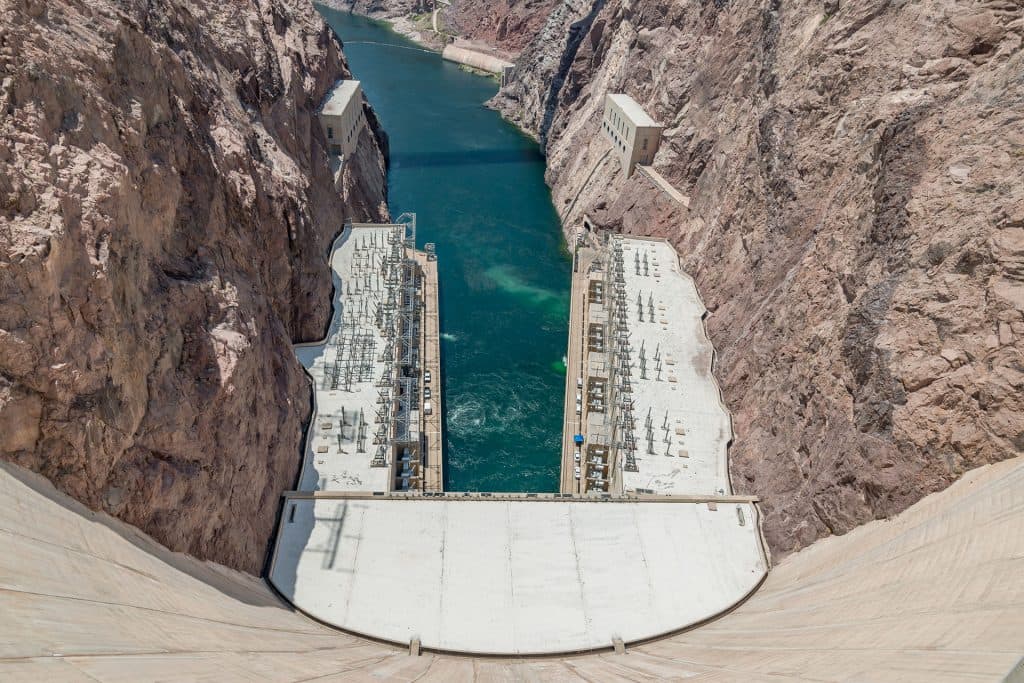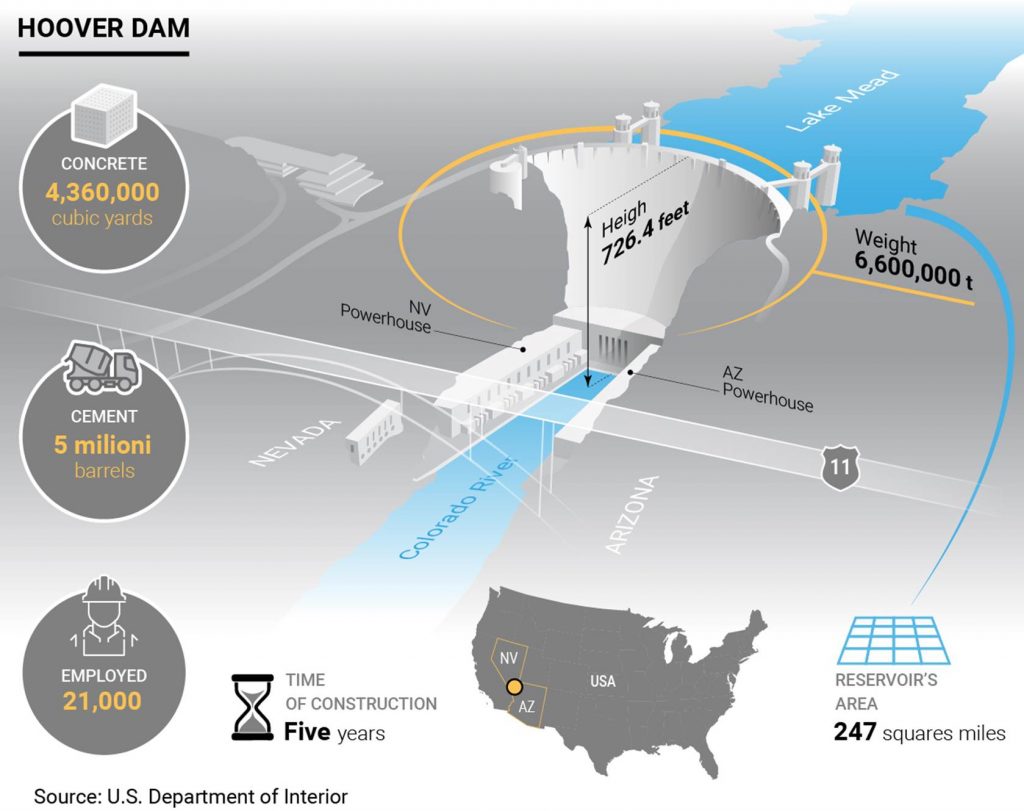
The Hoover Dam could never have been built without the help of the “high scalers,” the expert climbers — many of them native Americans of the Apache tribe — tasked with placing the dynamite on the rock walls of the Black Canyon of the Colorado River.
They climbed down the canyon walls on ropes, taking extreme risks, because their work was necessary to remove the loose rock on the canyon surface so that the dam could be built on the solid rock beneath.
The dangerous job pushed them to the limits of their strength, working through summers where the temperature exceeds 40° C (104° F). The “high scalers” are just one of the reasons why the Hoover Dam is included in the list of the United States of America’s most iconic infrastructure works, next to symbols such as the Brooklyn Bridge or the Golden Gate, which helped spur the country’s development and marked its history.
Hoover Dam: building a megastructure
The idea of building a large dam to exploit the waters of the Colorado River began in 1922 when Herbert Hoover, the American Secretary of Commerce at the time, successfully reached an agreement to sign the Colorado River Compact, which called for seven states to share the waters of the great river. In December 1928, President Calvin Coolidge gave the go-ahead to the Boulder Canyon Project, which included the construction of the dam, and in 1930, Secretary of the Interior Ray L. Wilbur announced that it would be called the Hoover Dam, in honor of the former Secretary of Commerce who went on to become president.
In March 1931 the US government awarded the work to a consortium called Six Companies, which began to recruit manpower that assembled at Boulder City, a small village built for the purpose six miles (9.6 kilometres) from the site.
The work lasted until September 30, 1935, when a crowd of 20,000 people came to see President Franklin Roosevelt inaugurate the dam. It was the highest dam in the US, which required 6.6 million tons of cement to build, enough to pave a standard-sized highway from San Francisco to New York City.

The dam’s impact
Over 20,000 people participated in the construction of the Hoover Dam, which played an important role in the history of the United States because of its positive impact on the development of the Southwest. The new dam was able to irrigate 2 million acres, and the 17 turbines of its hydroelectric plant provided energy for 1.3 million homes in California, Nevada and Arizona making their economic development possible.
In addition to its functionality, the symbolic significance of a work built during the Great Depression, one of the most difficult periods in American history, was immediately evident to all. In 1985 Hoover Dam was recognized as a National Historic Landmark, and in 1994 the American Society of Civil Engineers named it one of America’s Seven Modern Civil Engineering Wonders. Every year the dam is visited by some 7 million people, while nearly 10 million people visit Lake Mead, the artificial lake created by the dam, which in addition to being a huge drinking water basin has become a recreational area for the entire region.
Hoover Dam, Lake Mead and the fight against drought
The real strength of the Hoover Dam is the Colorado River, a huge waterway that – together with its tributaries – guarantees water supply to nearly 40 million people living in seven states (Colorado, Wyoming, New Mexico, Utah, Arizona, Nevada and California) and big cities like Los Angeles, Las Vegas, and Phoenix.
In the last 30 years, the demand for Colorado River water has been greater than the river’s capacity, according to a study published in 2012 by the US Bureau of Reclamation.
As a consequence, Lake Mead, the largest water reservoir in the United States, has witnessed a slow but steady decline in water levels, reaching its lowest ever in 2016 during the California drought.
That’s why the Southern Nevada Water Authority decided to build a new intake tunnel at the bottom of the lake, enabling water to be drawn even amid lower water levels. Lake Mead supplies 90% of Southern Nevada’s water requirements, including the city of Las Vegas. The project was completed by Salini Impregilo in a joint venture with the US company S.A. Healy, a subsidiary of Salini Impregilo. Today the tunnel provides 4.5 million cubic meters of water per day for the city, guaranteeing water supply even in times of drought. The infrastructure received the award “Tunneling Achievement Award of the Year” in 2016 from TBM (Tunnel Business Magazine), one of the most prestigious magazines in the tunneling sector.

